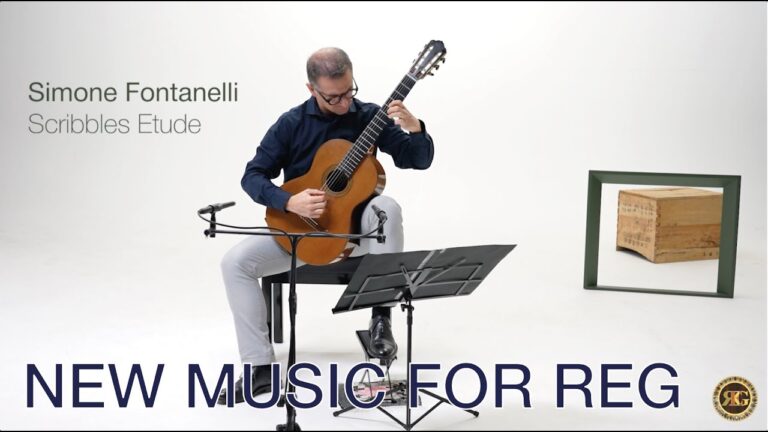Zane Forshee (guitar) and Gene Koshinski (percussion) play all three movements of Killjoy by Gene Koshinski (b.1980), scored for amplified guitar and percussion. This comes via Koshinski’s Youtube. Great interactive composition with excellent writing for the guitar. Fantastic playing by Forshee with a demanding and precise rhythmic part to execute in tight coordination with Koshinski. The guitar writing is very pitch oriented even with all the percussive and glissando effects; very effective soundscapes that mix well with the percussion.
Programme Notes
When I was approached by Zane Forshee to compose this piece, he asked me to base the work on material or an idea(s) drawn from a book or other form of literature. I found it appropriate to choose a children’s story due to his new found role as a parent himself. This led me to the story of Cinderella, which has stood the test of time, entertaining children and adults alike, generation after generation. At the heart of the story is the clock tower. As the clock strikes midnight, it ends Cinderella’s time at the Prince’s ball and her fairy Godmother’s magical spell. In the story, the clock assumes the role of an antagonist (which, in real life, is something we can all relate to).
The title is derived from the Disney film adaptation of the story. In this version, Cinderella is awaked by the clock – foreshadowing the role of this antagonist. At this moment Cinderella exclaims:
Oh, that clock! Old killjoy.
I hear you. Come on, get up, you say.
Time to start another day.
Even he orders me around.
Well, there’s one thing.
They can’t order me to stop dreaming.Killjoy explores the sounds of clocks, utilizing their musical value as a starting point. In essence, the work is a collection of variations on themes provided by various clocks where, in many cases, the “theme” is never actually stated. The first movement focuses on the stereotypical “tick-tock” of the clock. The second movement depicts a sweet lullaby that plays at the top of every hour. The final movement brings the listener inside the clock. When I was writing this, I had the vision of a mouse scampering from “room” to “room” inside a massive clock, the music magnifying the mechanical sounds of the inner workings of such a precise device.





I love these works. Beautifully composed and played
This is very reminiscent to me of some of the work of virtuoso avant garde and progressive rock guitarist and icon, Robert Fripp, who of course would have used very different instrumentation potentially to produce music with a similar sound and feel. Such intensely creative use of the classical guitar, here composed by a percussionist to include several inventive techniques I’ve never previously heard or seen used on the classical guitar results in musical expression that steps outside of the typical combined harmonic and melodic play most characteristic of classical guitar music, to make percussion one of the most powerfully expressive and inventive uses of the instrument. This was exciting, refreshing, interesting, and beautiful to listen to.
Thank you for checking out the piece, Robert. Commissioning Gene to do this piece has been a tremendous amount of fun. I’m pleased you found the piece exciting and refreshing!
Yeah, parts of “Clockwork” might fit right in with “Industry” by King Crimson.
that is amazing…. well done!!!
Thank you, Katie. It’s been a fun project.
Great score for a Stephen King movie or a remake of the Tin Drum. Or not!
Lol, I was thinking Twilight Zone.